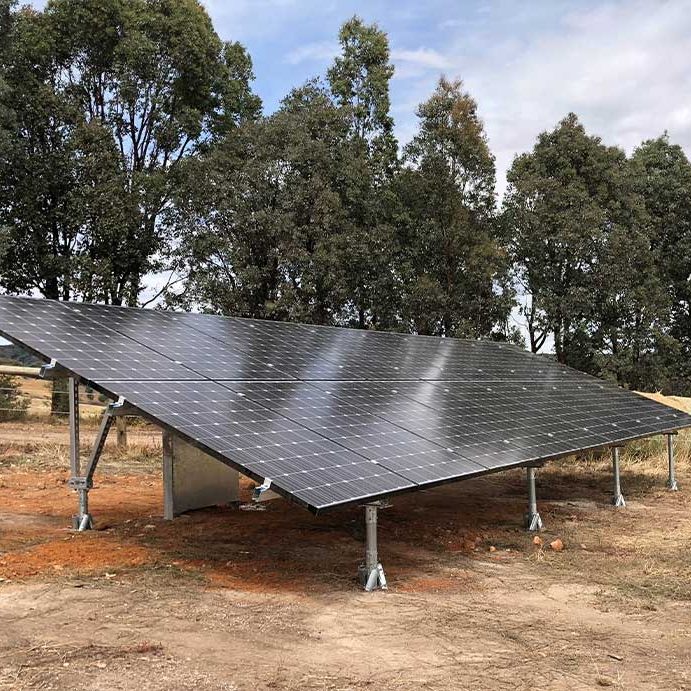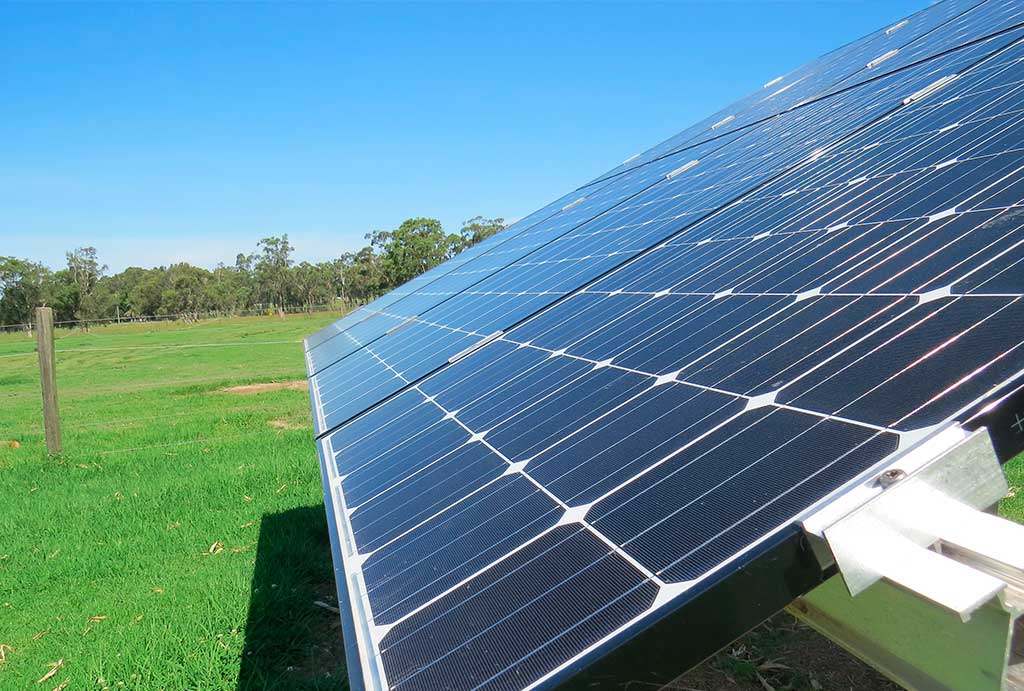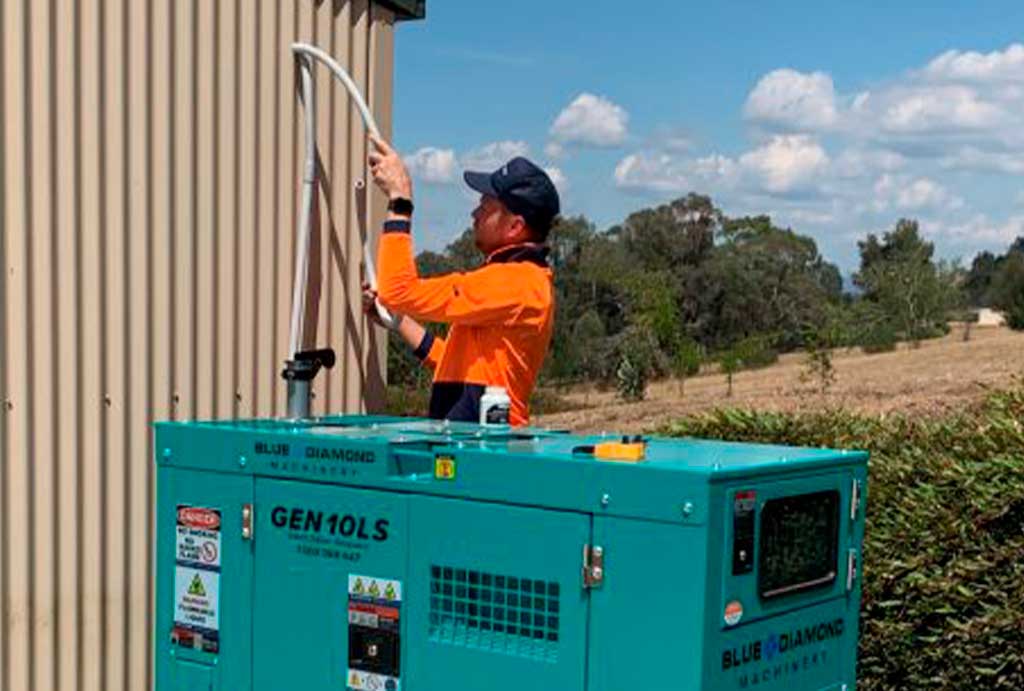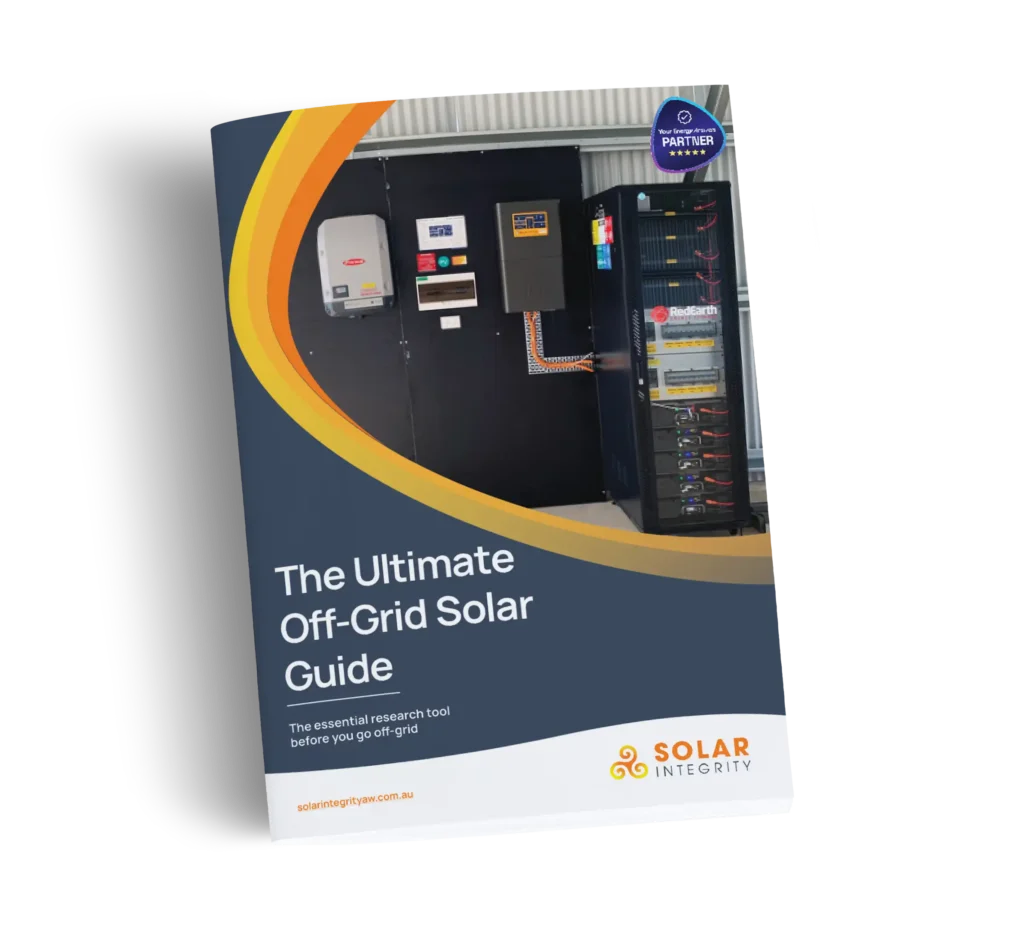Off-Grid Systems
Energy Independence
Quality off-grid systems
A stand-alone system is when you are operating as your own total power source. They are usually designed for homes located in semi-rural/rural/remote areas that don’t have access to the power grid, or where the cost of connecting to the grid is too expensive.
This type of power system will require a bank of batteries traditionally deep cycle, but over recent years we have seen lithium batteries enter the stand-alone market and are proving very reliable and successful, check out the PowerPlus battery. These systems are charged by the solar panels and designed to provide power for three to five days with limited solar input.
Designing standalone systems is very different to a grid connected or hybrid system. We factor in ALL your energy usage, therefore as part of our initial consultation we will request you to complete a load profile sheet.
We also factor in periods with limited or no solar input. Therefore, a generator is required to be factored in, we highly recommend an auto start one where you will hardly notice when it kicks in but will save you from going out to the system on a freezing cold winter’s night to start it yourself.


Designed for you
Why quality and good design is important
It is so vital that your standalone system is designed right, and that includes the design and more importantly the products used. As this is your power station for years to come, when it comes to Off-Grid only the most reliable equipment is recommended.
What we design is your only power source, and the last thing you want is an unreliable supply. This is why we always recommend installing an auto start generator with the unit, just in case. That way when it’s -3 degrees outside and your power goes out you don’t have to head outside to try and start the generator.
We also spend considerable time designing the Off-Grid system, using your load profile, to make sure your power needs and the system size matches for the whole year.
Maintaining your off-grid system
There is maintenance involved in stand-alone systems. But through a monitoring device you will be able to keep an eye on what is happening and when attention may be required. It is advised that you have a solar professional look over your system once a year.
Solar Integrity offers a maintenance program, we schedule your system for a general clean and check over once a year, or more often if you choose (people on dirt roads or high pollution areas might like to have theirs done more often), this will ensure that your solar system remains working at its optimum. We then send a report on your system and our findings. If there is anything requiring attention we will advise.

FAQs
What's the main difference between Off-Grid and Grid-connected systems?
The biggest difference is your reliance on the utility grid. Off-Grid systems operate independently, generating and storing all your energy needs with solar panels and batteries with no connection to the grid at all. Grid-connected systems remain connected to the grid, using solar power primarily and drawing from the grid when needed or when excess energy is produced, however if you add a battery that is then called a solar hybrid system.
Is my location suited for an Off-Grid solar system?
Transitioning to an off-grid solar power system offers enticing possibilities for energy independence and environmental sustainability. However, ensuring compatibility between your home and this alternative energy source requires careful consideration of several crucial factors. Below are some key elements, providing a comprehensive roadmap for a successful off-grid solar journey.
1. Solar Resource Assessment
The primary fuel for your off-grid system is sunlight. Therefore, evaluating your local solar resource is important. Key aspects to consider include:
- Average daily sunshine hours: Aim for at least 5-6 peak sunlight hours per day for optimal energy production.
- Cloud cover and shading: Consistent cloud cover or significant shading throughout the day can hinder energy generation. Analyse potential shading patterns from nearby structures and trees.
- Seasonal variations: Solar irradiance fluctuates throughout the year. Understanding these variations in your region will help you size your system and choose appropriate technologies.
2. Roof Suitability
Your roof serves as the platform for your solar panels, so its characteristics play a vital role in system compatibility. Assess the following:
- Roof orientation: In Australia, north-facing roofs capture the most sunlight. However, deviations are manageable.
- Roof size and condition: The available space on your roof determines the number and size of panels you can install. Ensure your roof structure is sturdy enough to handle the weight and wind load of the solar system.
- Roof material: Most roofs, including asphalt shingles, metal roofs, and concrete tiles, can accommodate solar panels with appropriate mounting systems.
3. Energy Consumption Analysis:
Understanding your household’s energy consumption patterns is crucial for designing an efficient off-grid system. Key considerations include:
- Total daily/monthly energy needs: Appliances, lighting, and electronics all contribute to your energy consumption. Accurately assess your usage to size your system accordingly.
- Peak energy demands: Identify periods with high energy demands, such as running multiple appliances simultaneously. Your system should be able to meet these peak requirements.
- Lifestyle and future needs: Consider your current and future energy needs. If you anticipate increased usage, factor that into your system design.
4. Financial Feasibility:
Off-grid solar systems require an upfront investment. However, long-term cost savings and potential government incentives can make them financially attractive. Consider the following:
- Equipment and installation costs v connection to the grid and ongoing quarterly electricity bills: Research the cost of solar panels, inverters, batteries, and installation in your area. Compare quotes from multiple reputable installers.
- Government incentives and rebates: The Australian Government offer financial support for solar installations. Explore available programs and incentives to reduce your upfront costs. You can see our rebates page to see if you’re eligible.
- Energy cost savings: Analyse your current electricity bill and compare it to the projected energy production of your off-grid system. The long-term cost savings can be significant.
5. System Design and Installation:
Choosing the right components and ensuring proper installation are critical for efficient and safe operation of your off-grid system. We at Solar Integrity have you covered here on both fronts.
- Select appropriate solar panels, inverters, and batteries: Consider factors like efficiency, size, budget, and compatibility with your system.
- Design a system that meets your energy needs and budget: Solar Integrity will create a customised system layout and component selection based on your specific requirements.
- Ensure proper installation: Professional installation guarantees optimal performance, system safety, and adherence to local building codes and regulations.
By thoroughly assessing these key factors and consulting with experienced professionals, you can ensure your home’s compatibility with an off-grid solar power system. Remember, a successful transition requires careful planning, informed decision-making, and a reliable team of experts to guide you on your journey towards energy independence and a sustainable future.
Will I be affected by power outages in my area?
Off-Grid systems act as your own personal power station, so the only way you will have a power outage is if your battery is depleted and you forgot to buy fuel for your auto start generator, or if something needs attention. Grid-connected systems typically lose power during outages unless equipped with additional battery backup.
Should I go for a ground mounted or rooftop installation for my Off-Grid system?
When choosing solar panel racking, assessing all possibilities is wise. Ground mounts are great in rural areas where there is room, or where it is necessary depending on distances between infrastructure. However, there are additional costs associated. Rooftop racking systems offer a powerful alternative, unlocking a blend of benefits.
Unleash System Flexibility and Future Potential:
- Easy maintenance: Accessing your panels for cleaning, repairs, or upgrades is a breeze with rooftop systems, saving you time and money.
- Expand with ease: Adding more panels is a breeze with most rooftop systems, allowing you to scale your solar power as your needs grow.
- Integrate seamlessly: Many rooftop systems are compatible with various roof types and integrate seamlessly with your existing architecture.
Is Off-Grid battery storage safe?
Just like any electrical device in your home, safety is of utmost importance when it comes to home solar batteries. Modern solar batteries are designed with a strong focus on safety, incorporating various technologies to ensure secure and reliable operation.
Quality solar batteries for on-grid or off-grid nowadays are very safe. There are many types of solar storage batteries. Therefore, there are different safety standards.
In Off-Grid scenarios, often the solar panels are installer on the shed, the battery installed inside the shed, and the generator is installed beside the shed.
The range of solar storage batteries
The world of solar storage batteries is diverse, with various types catering to different needs and applications. Each type adheres to specific safety standards, reflecting the ongoing commitment to enhancing the safety features of these essential components in off-grid systems.
Lithium-ion batteries
Modern lithium-ion home solar batteries have emerged as an alternative that addresses specific safety concerns associated with lead-acid batteries.
Unlike lead-acid batteries, lithium-ion batteries do not pose the same risk of hydrogen gas emission during charging. This technological advancement enhances the safety profile of home solar batteries, providing users with a more secure and convenient energy storage solution.
Lead-acid batteries
Lead-acid batteries, a common choice for off-grid systems, are known for their safety and recyclability. The design of these batteries prioritises user safety and ease of recycling, aligning with sustainable practices. While lead-acid batteries are generally considered safe, it’s crucial to be aware of specific safety considerations associated with their use.
Hydrogen gas emissions
One notable safety consideration with lead-acid batteries is the potential for the production of an explosive mixture of oxygen and hydrogen gas during the charging process. Although the danger level is comparable to having household gas or gasoline-powered cars parked in a garage, it underscores the importance of proper ventilation.
Safety precautions
Proper ventilation is key to mitigating the risk of gas build-up during the charging of lead-acid batteries. While the issue may sound serious, it is manageable by taking appropriate precautions. Ensuring that lead-acid batteries are housed in areas with adequate ventilation significantly reduces the potential for dangerous gas concentrations.
It is important for users of lead-acid batteries to be informed about the potential risks and to understand the precautions necessary to maintain a safe environment. This awareness empowers users to implement safety measures effectively and ensures the responsible use of lead-acid batteries in off-grid systems.
In summary
The safety of off-grid battery storage, particularly in the context of home solar batteries, is a critical consideration. While lead-acid batteries, commonly used in off-grid systems, are generally safe, the potential for hydrogen gas emission during charging necessitates proper ventilation and user awareness.
Adhering to safety precautions and understanding the specific risks associated with lead-acid batteries ensures the secure operation of off-grid systems.
The advent of modern lithium-ion batteries represents a significant leap forward in addressing safety concerns. These batteries eliminate the risk of hydrogen gas emission, providing users with a safer and technologically advanced option for home solar storage.
As the renewable energy landscape continues to evolve, the focus on safety standards and technological innovations ensures that off-grid battery storage remains a reliable and secure solution for harnessing solar power.
Can I use Off-Grid systems in urban or suburban areas?
Off-grid systems have long been synonymous with remote locations, providing independent power solutions where traditional grid connections are impractical.
While grid-connected systems remain prevalent in developed built up areas, exploring the potential of off-grid solutions unveils interesting possibilities, often serving as backups or for specific applications.
Off-grid systems in developed spaces
Traditionally, off-grid systems have been primarily tailored for remote settings, operating independently of the central power grid. However, technological advancements and changing energy patterns challenge this notion. Off-grid systems can indeed be employed in urban or suburban areas, albeit with careful consideration of the unique energy demands and regulatory landscape of these environments.
Factors to consider
In urban areas, grid-connected systems are the standard, providing a reliable and continuous power supply during the day. Off-Grid systems, while technically possible, are financially challenging in this scenario. The size of the battery system plus a backup generator versus the cost makes going off grid in an urban setting prohibitive to meet the consistent and often high energy demands of developed spaces. The prevalence of grid-connected infrastructure also plays a significant role in shaping energy consumption patterns.
One of the solutions to this would be looking at a hybrid solar and battery set up. Where you are still connected to the grid, but not needing as big of a battery bank or a generator (unless for in the event of an extreme event) thus saving money.
This serves as a resilience strategy, particularly in areas prone to grid disruptions or during extreme weather events.
Ultimately it comes down to what you want to do and budget.
Specialised applications
Off-grid systems find niche applications in developed spaces, such as powering remote cabins, water pumps, or specific off-grid structures. In suburban areas, where water features or outlying structures may be present, these systems offer an autonomous and sustainable energy solution.
Challenges and solutions
Energy demand and storage
One primary challenge for off-grid systems in developed spaces is meeting the high and consistent energy demand. Adequate energy storage solutions, such as advanced battery technologies, are crucial to ensuring a continuous and reliable power supply.
Regulatory considerations
Navigating local regulations and building codes is another key aspect when considering off-grid systems in urban or suburban areas. Understanding and complying with these regulations is essential to the successful implementation of off-grid solutions.
So while off-grid systems are traditionally associated with rural settings, their application in urban or suburban areas is plausible, albeit with some considerations.
Grid-connected systems remain the norm in developed spaces, providing a stable and continuous power supply. However, off-grid solutions can carve a niche as backup systems or for specific applications, contributing to resilience and sustainability goals.
As technology continues to advance and environmental considerations gain prominence, the viability of off-grid systems in urban and suburban areas may see further exploration. As with any energy decision, thorough assessment, adherence to regulations, and consideration of specific needs are crucial elements in determining the feasibility and effectiveness of off-grid solutions in developed spaces.

Are you thinking of going off-grid?
Solar Integrity has installed many hundreds of off-grid PV systems and we share our experience in this easy to follow guide. Enjoy the info and feel free to call us and ask more off-grid solar related questions.
